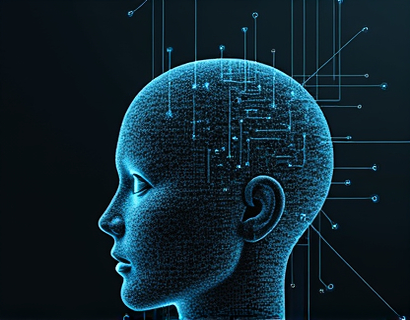Unlocking the Potential of AI-Driven Chat Interfaces in Educating About the Phygital Industry
Introduction to the Phygital Industry
The convergence of physical and digital worlds has given rise to a novel sector known as the phygital industry. This emerging field combines the best of both worlds, offering innovative solutions that enhance user experiences across various domains such as education, retail, healthcare, and entertainment. As technology continues to advance, understanding the phygital industry becomes increasingly crucial for educators and young learners who are the future innovators and consumers of these technologies.
The Role of AI-Driven Chat Interfaces
To facilitate a deeper understanding of the phygital industry, AI-driven chat interfaces have been developed, specifically tailored for educators and young learners. These chat interfaces serve as interactive platforms where users can engage in conversations to gain specialized knowledge about phygital services and the industry as a whole. The integration of AI ensures that the information provided is not only comprehensive but also dynamically updated to reflect the latest trends and developments.
Ensuring Safety and Verified Content
A critical aspect of these AI chat interfaces is the emphasis on safety and content verification. Given the sensitive nature of providing educational content to children and students, it is paramount that the information shared is accurate, reliable, and free from harmful or inappropriate material. The chat interfaces employ advanced algorithms and human oversight to verify the content, ensuring that only high-quality, educational information is disseminated. This approach not only protects young users but also builds trust in the platform.
Tailored Content for Young Learners
The AI chat interfaces are designed with a user-friendly interface that caters specifically to the needs of young learners. The language used is simplified, and the content is structured in a way that is easy for children and students to understand. Interactive elements such as quizzes, games, and visual aids are incorporated to make learning engaging and enjoyable. This tailored approach ensures that the educational experience is both effective and enjoyable, fostering a deeper interest in the phygital industry among younger audiences.
Specialized Insights into Phygital Services
One of the key strengths of these AI chat interfaces is their ability to provide specialized insights into various phygital services. Users can ask questions about augmented reality (AR) applications, virtual reality (VR) experiences, mixed reality (MR) technologies, and other phygital innovations. The chat interfaces can explain complex concepts in simple terms, provide real-world examples, and highlight the potential impacts of these technologies on different industries. For educators, this means having a valuable resource to enhance their curriculum and provide students with current, relevant information.
Augmented Reality in Education
Augmented reality (AR) is a prime example of a phygital service that has significant educational potential. AR technology overlays digital information onto the physical world, creating interactive and immersive learning experiences. Through AI-driven chat interfaces, educators can learn how AR can be used to bring textbooks to life, create virtual labs, and enhance field trips. For instance, students can use AR to explore the human anatomy in 3D, visualize historical events, or conduct virtual science experiments. These applications not only make learning more engaging but also help in better retention of complex concepts.
Virtual Reality and Its Educational Applications
Virtual reality (VR) takes the immersive experience to a whole new level by completely immersing users in a digital environment. VR has numerous educational applications, from simulating historical events to providing virtual field trips to distant locations. AI chat interfaces can guide educators through the process of integrating VR into their classrooms, offering tips on creating VR content, selecting appropriate VR tools, and designing lesson plans that leverage VR's unique capabilities. For example, students can virtually visit ancient civilizations, explore the depths of the ocean, or travel to space, all from the comfort of their classroom.
Mixed Reality: Bridging the Physical and Digital
Mixed reality (MR) combines elements of both AR and VR, creating a seamless blend of the physical and digital worlds. MR technology allows users to interact with digital objects in their real-world environment, enhancing the user experience in ways that AR and VR alone cannot. AI chat interfaces can provide insights into how MR can be used in education to create interactive learning environments. For instance, MR can be used to overlay digital information onto real-world objects, allowing students to interact with 3D models of complex structures, such as molecules or mechanical parts, in real-time.
Interactive Learning and Engagement
The AI chat interfaces not only provide information but also facilitate interactive learning experiences. Through natural language processing, these chat interfaces can engage in conversations, answer questions, and even adapt to the learning pace of individual students. This personalized approach ensures that each student receives the support they need to fully understand the material. For educators, this means having a powerful tool to complement traditional teaching methods and cater to diverse learning styles.
Fostering Critical Thinking and Creativity
Beyond providing factual information, AI chat interfaces can also play a role in fostering critical thinking and creativity among young learners. By posing thought-provoking questions and encouraging users to think critically about the implications of phygital technologies, these chat interfaces help develop essential skills that are vital in the modern world. For example, students can discuss the ethical considerations of AR and VR in education, explore the potential economic impacts of MR, or consider the environmental benefits of digital twins in various industries.
Building a Safe and Inclusive Learning Environment
The safety and well-being of young learners are paramount, and AI chat interfaces are designed with this in mind. The platforms employ strict content moderation policies and use machine learning algorithms to detect and filter out any inappropriate or harmful content. Additionally, the interfaces can be configured to ensure privacy and data protection, complying with regulations such as COPPA (Children's Online Privacy Protection Act). This creates a safe and inclusive environment where students can explore and learn without concerns.
Collaboration and Community Building
AI chat interfaces can also serve as platforms for collaboration and community building. Educators can connect with peers to share best practices, resources, and ideas for integrating phygital technologies into their classrooms. Students can join virtual study groups, participate in online discussions, and collaborate on projects with peers from around the world. These interactions not only enhance the learning experience but also help build a global community of learners and educators passionate about phygital innovations.
Continuous Learning and Adaptation
The phygital industry is rapidly evolving, and AI chat interfaces are designed to keep pace with these changes. By continuously learning from user interactions and incorporating feedback, these chat interfaces stay up-to-date with the latest trends and advancements. This ensures that the information provided remains relevant and valuable, supporting educators and students in their ongoing journey of learning and discovery.
Conclusion
AI-driven chat interfaces represent a significant step forward in educating about the phygital industry. By providing specialized, verified, and engaging content, these platforms empower educators and young learners to explore the exciting world of phygital technologies. The focus on safety, interactivity, and inclusivity ensures that the learning experience is not only informative but also enjoyable and secure. As the phygital industry continues to grow, these chat interfaces will play a crucial role in shaping the next generation of innovators and consumers, equipped with the knowledge and skills to thrive in a digital-first world.










































